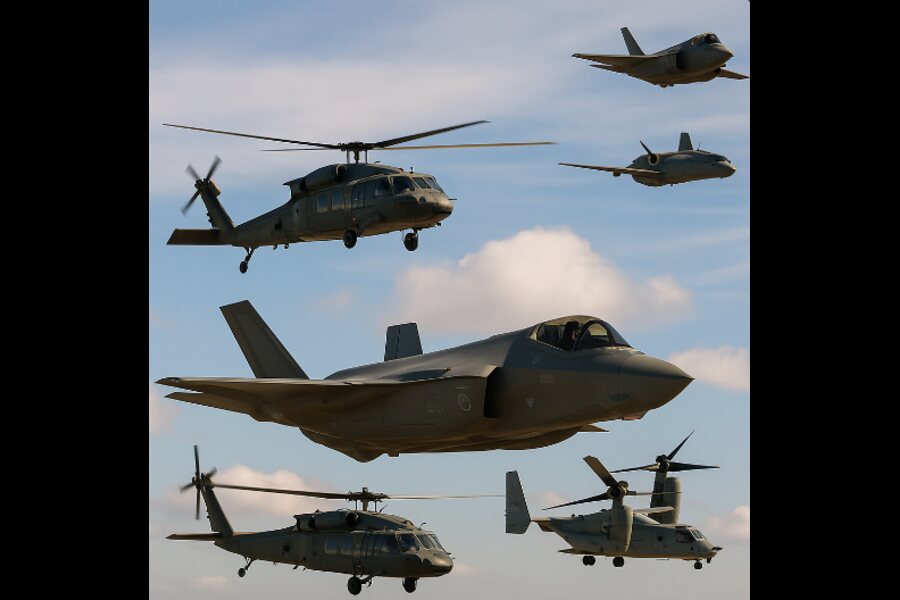The global defense industry is experiencing a significant transformation, marked by a surge in mergers and acquisitions (M&A) activity. This consolidation is driven by the need for technological advancement, supply chain resilience, and strategic positioning amid escalating geopolitical tensions. Leading this charge is Lockheed Martin, whose recent acquisitions underscore its commitment to maintaining dominance in the aerospace and defense sectors.
Lockheed Martin’s Strategic Acquisitions
Lockheed Martin has been proactive in expanding its capabilities through targeted acquisitions. In August 2024, the company acquired Terran Orbital for $247.1 million, a move aimed at enhancing its satellite solutions and securing its supply chain. This acquisition reflects Lockheed’s strategy to integrate vertically and bolster its position in the space domain.
Historically, Lockheed’s acquisition of Sikorsky Aircraft in 2015 for $9 billion was a landmark deal, positioning it as a leader in military helicopter manufacturing. These strategic moves highlight Lockheed Martin’s focus on diversifying its portfolio and strengthening its technological edge.
Global M&A Trends in the Defense Sector
The defense industry’s M&A landscape is not limited to the United States. Globally, companies are engaging in strategic acquisitions to enhance capabilities and expand market reach.
United States
The United States remains the epicenter of defense M&A activities, with industry giants like Lockheed Martin, Raytheon, Boeing, and Northrop Grumman continuously pursuing acquisitions. In 2023, L3Harris completed its $4.7 billion acquisition of Aerojet Rocketdyne, strengthening its propulsion capabilities. Similarly, Boeing’s acquisition of Spirit AeroSystems in 2024 for approximately $4 billion reinforced its supply chain.
Australia
Australia’s defense industry is also witnessing consolidation, driven by regional security concerns and government initiatives to boost domestic capabilities. Hanwha Defense’s $649 million bid for Austal is a notable example, aiming to secure a foothold in naval shipbuilding. BAE Systems Australia has also been expanding through smaller acquisitions, focusing on advanced systems and local production.
Europe
European defense firms are consolidating to compete with U.S. counterparts. BAE Systems’ acquisition of Ball Aerospace for $5.6 billion in 2023 exemplifies this trend, aiming to strengthen its position in the aerospace sector. Additionally, Rheinmetall’s acquisition of Dutch startup REEQ indicates a focus on expanding into light hybrid vehicles.
Asia-Pacific
In the Asia-Pacific region, South Korea’s Hanwha Ocean made a $649 million bid for Australian shipbuilder Austal, reflecting efforts to enhance naval capabilities amid regional security concerns. Moreover, LIG Nex1’s planned acquisition of U.S.-based Ghost Robotics for $239 million underscores the emphasis on unmanned systems.
Middle East and Africa
The UAE’s Edge Group has been actively acquiring companies to bolster its defense portfolio. Notable acquisitions include cybersecurity firm OryxLabs and a majority stake in Swiss VTOL manufacturer ANAVIA. These moves aim to position Edge Group as a significant player in advanced defense technologies.
Drivers Behind Defense M&A Activity
Several factors are propelling M&A activity in the defense sector:
- Technological Advancement: The rapid pace of technological innovation necessitates acquisitions to stay competitive.
- Supply Chain Resilience: Companies are acquiring suppliers to secure critical components and reduce dependencies.
- Geopolitical Tensions: Rising global conflicts are prompting nations to invest in defense, leading companies to expand capabilities through M&A.
- Market Expansion: Firms are seeking to enter new markets and diversify their offerings via strategic acquisitions.
Notable Defense M&A Deals
Here is a list of significant defense M&A transactions:
- L3 Technologies and Harris Corporation (2019) – $33.5 billion
- United Technologies and Raytheon Company (2020) – Over $100 billion
- Lockheed Martin and Sikorsky Aircraft (2015) – $9 billion
- BAE Systems and Ball Aerospace (2023) – $5.6 billion
- L3Harris and Aerojet Rocketdyne (2022) – $4.7 billion
- Boeing and Spirit AeroSystems (2024) – Approximately $4 billion
- Honeywell and CAES Systems (2024) – $1.9 billion
- Safran and Collins Aerospace’s Actuation and Flight Controls Unit (2023) – $1.8 billion
- THALES and Cobham Aerospace Communications (2024) – $1.1 billion
- Airbus and ZF Luftfahrttechnik (2023) – Undisclosed
- Rheinmetall and REEQ (2024) – Undisclosed
- LIG Nex1 and Ghost Robotics (2023) – $239 million
- AeroVironment and Tomahawk Robotics (2023) – $120 million
- Hensoldt and ESG Elektroniksystem (2023) – $728 million
Successes and Challenges
While many defense M&A deals have been successful in achieving strategic objectives, challenges remain. For instance, Lockheed Martin’s attempted acquisition of Aerojet Rocketdyne faced regulatory hurdles, ultimately leading to its termination. Conversely, BAE Systems’ acquisition of Ball Aerospace has been viewed positively, enhancing its technological capabilities.
Defense M&A Prediction for 2025
- Continued Consolidation Among Major Players:
Expect further consolidation among leading defense contractors, especially in the U.S. and Europe. Companies like Lockheed Martin, Boeing, Northrop Grumman, and BAE Systems will likely pursue acquisitions to enhance technological capabilities in space, cybersecurity, and unmanned systems. - Rise of Dual-Use Technology Acquisitions:
Defense companies will increasingly target firms that specialize in dual-use technologies (both military and civilian applications), such as artificial intelligence, quantum computing, and advanced materials. - Regional Expansion in Asia-Pacific and Middle East:
Firms from South Korea, Japan, UAE, and Saudi Arabia will continue to acquire foreign defense technologies to build domestic capabilities. Hanwha and Edge Group are likely to remain active acquirers. - Supply Chain Security Deals:
Mergers will focus on securing supply chains for critical components, especially semiconductors, advanced sensors, and rare earth materials. - Regulatory Challenges:
The U.S. and EU will maintain strict scrutiny on defense M&A deals, especially those with cross-border implications. Failed deals due to regulatory pushback will remain a risk.
The defense industry’s M&A landscape is dynamic, driven by the need for technological superiority, supply chain security, and strategic market positioning. Lockheed Martin’s recent activities exemplify the proactive approach companies are taking to navigate this complex environment. As geopolitical tensions persist, M&A will continue to be a critical tool for defense firms aiming to adapt and thrive in an ever-evolving global landscape.

